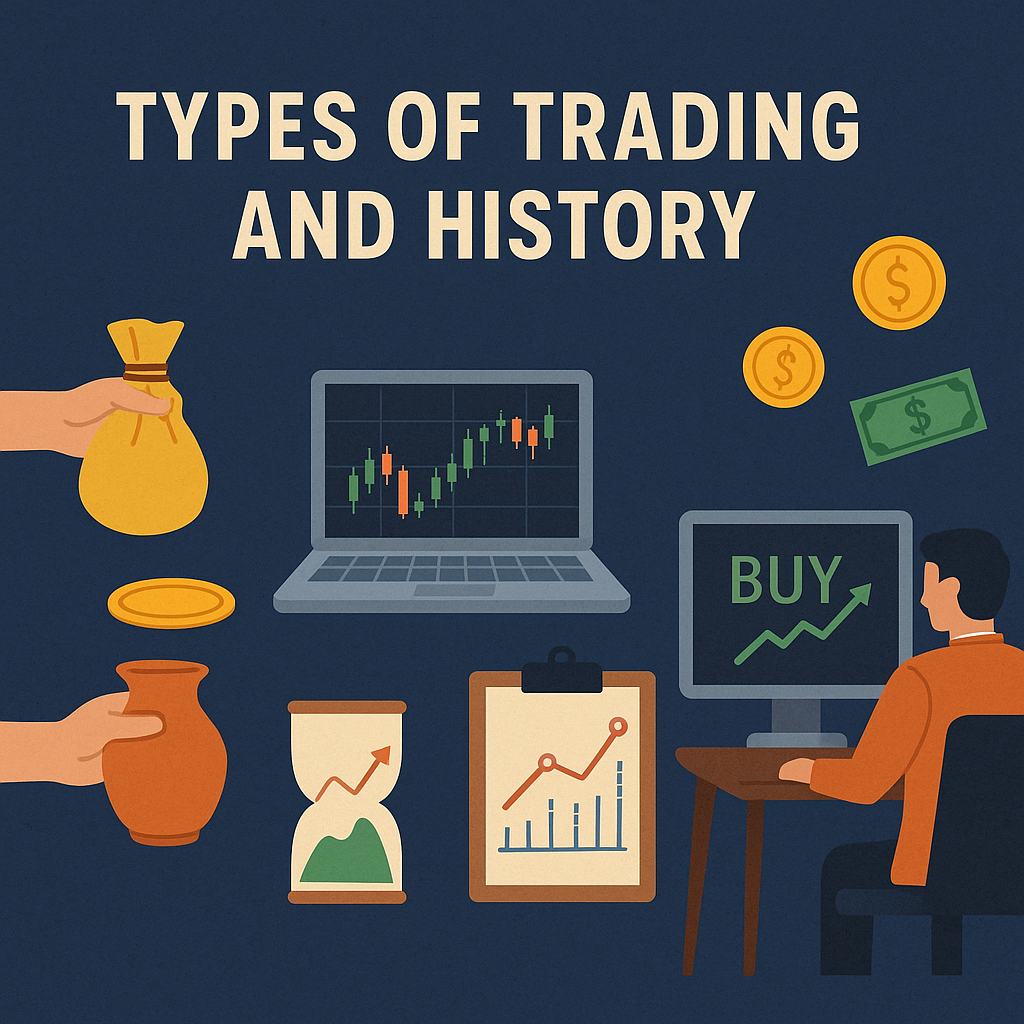Trading: From Primitive Barter to Digital Strategies

Long before charts, brokers, or crypto wallets existed, people traded. The idea was simple: give what you have, get what you need. This ancient human instinct didn’t fade—it transformed. What began with exchanging clay pots for grain evolved into today’s sophisticated trading methods, moving at the speed of light across digital networks.
A Glimpse into the Past
Thousands of years ago, in regions like Sumer or the Indus Valley, people bartered livestock, salt, and tools. There were no price tags—value was relative and negotiated. As trade grew, civilizations needed something more standardized. Metal coins, and later paper money, allowed people to assign consistent worth to goods. This small change revolutionized how humans interacted economically.
Eventually, global trading routes emerged. Merchants braved deserts and oceans, exchanging silk, spices, and silver. These early traders laid the groundwork for markets as we know them today.
Modern Faces of Trading
Contemporary trading takes many shapes, each suiting different goals and temperaments:
- Day Trading – Fast-paced and intense. Positions open and close within hours, often minutes. Requires sharp reflexes and constant monitoring.
- Swing Trading – Less frantic. Traders hold assets for several days, aiming to catch short- to mid-term trends.
- Long-Term Investing (Position Trading) – Here, patience dominates. Assets are held for months or even years, with belief in their future growth.
- Scalping – Focused on micro-movements. Scalpers make numerous trades a day, seeking tiny profits that add up.
- Algorithmic Trading – Software, not people, decides when to buy or sell. Algorithms process thousands of data points per second to execute lightning-fast trades.
- Social & Copy Trading – A trend gaining momentum. Newcomers follow experienced traders and automatically replicate their actions.
The Ongoing Evolution
Trading today is global, decentralized, and data-driven. Yet, at its core, it remains human: a mix of logic, emotion, and calculated risk. From haggling in open markets to executing trades with AI-powered bots, our approach to exchange keeps advancing—but the need to trade never left us.